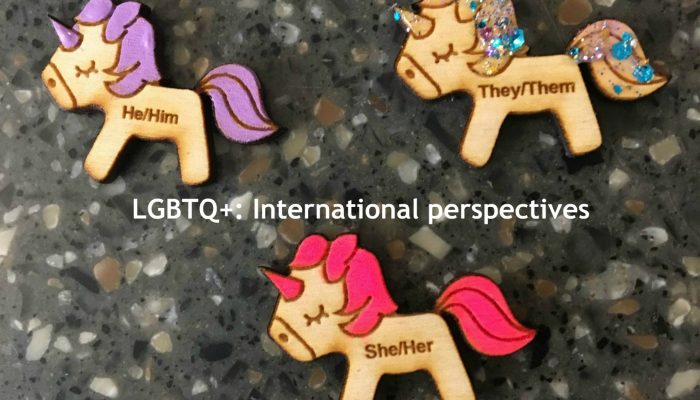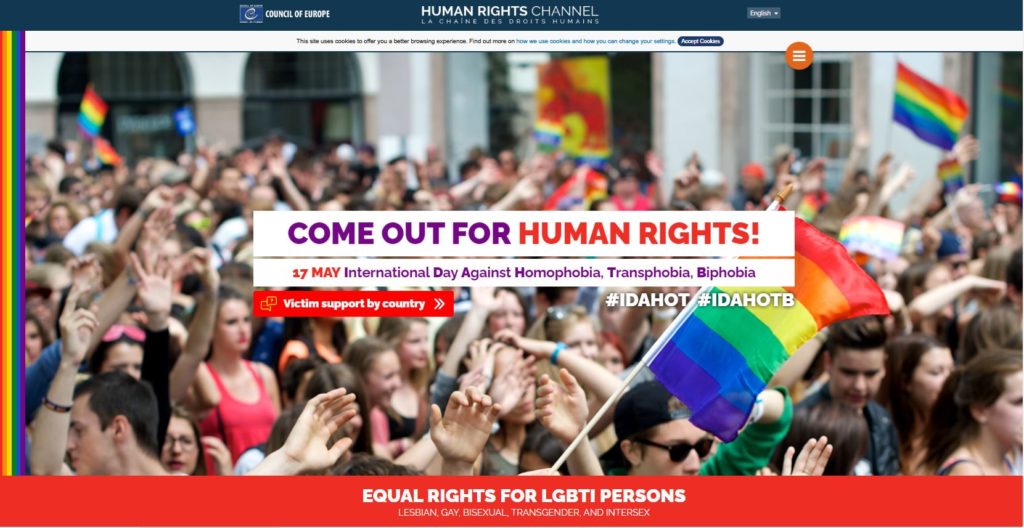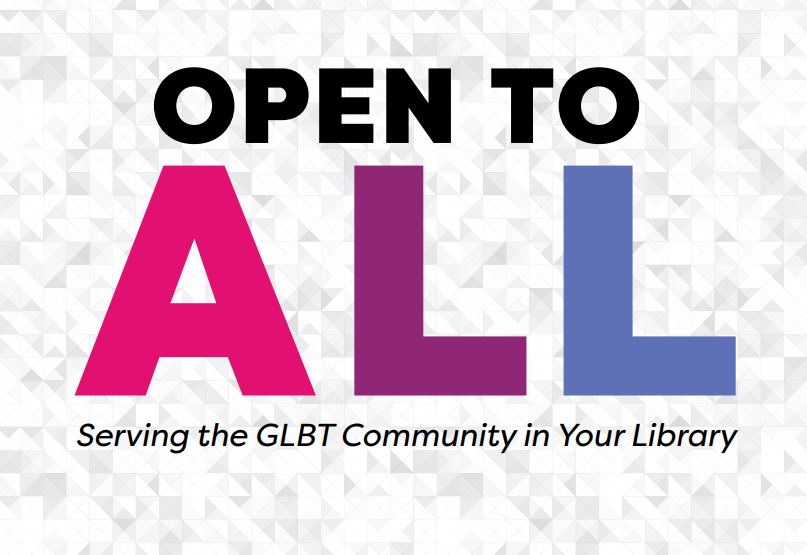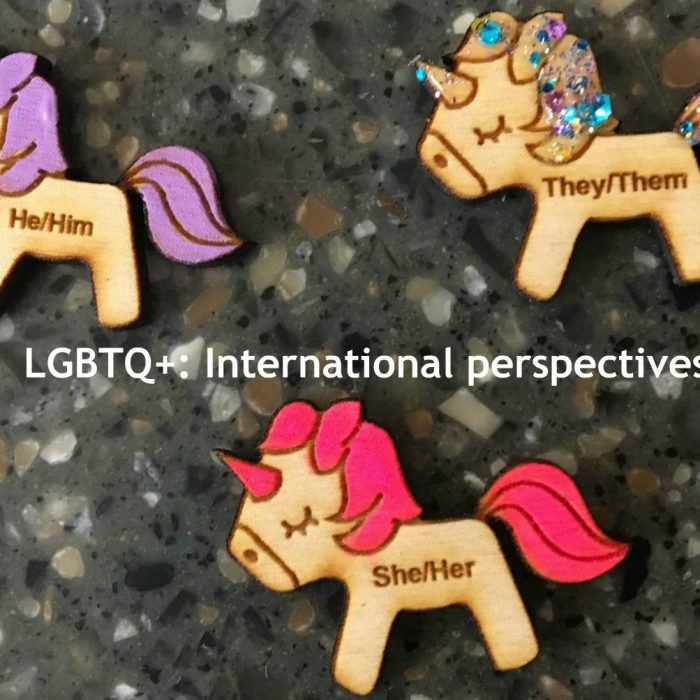Members of LGBTQ+ communities benefit from access to supportive networks and organizations.

Clear guidance yes for LGBTQ+ support, but context matters
In the latest article in this limited series of conversations, Amanda Wilk and John Vincent look at the importance of context.
Throughout the series, John and Amanda will use the acronym LGBTQ+ to refer to lesbian, gay, bisexual, transgender, queer/questioning and other identities within our community. We would like to acknowledge that other acronyms are also used, and that sexual and gender expressions are diverse and impossible to represent within the confines of five letters. For more information and terminology related to LGBTQ+ identities, the 519’s Glossary of terms is a valuable resource.
We would love to engage with you, and welcome your comments and feedback below.
John Vincent (J.V.)
In our previous article, we looked at the role of professional bodies in supporting LGBTQ+ library staff and library provision. (You may be delighted to know that the UK CILIP LGBTQ+ Network launched in February 2020!)
One of the discussions that regularly crops up, particularly whilst running training courses, is about hard-and-fast rules for libraries engaged with LGBTQ+ communities. I feel strongly that, whilst there are areas where there should be clear guidance, there are others where context is more important.
Let’s look at some examples.
The pink triangle
Until relatively recently, many libraries used the pink triangle symbol to identify LGBTQ+ stock. However, this practice is now questionable—why? In Nazi concentration camps, a pink triangle was used to identify some gay men, but was reclaimed by LGBTQ+ people as a reminder of violence against them, and, as this article in PinkNews about Holocaust Memorial Day reminds us, in the 1980s:
“In an act of defiance, the pink triangle was reclaimed—and often inverted, with the tip pointing upwards—as a sign of gay activism. It became known on an international scale during the 1980s, when a six-person collective, called the Silence=Death Project, used an inverted version of the triangle on posters that the group plastered around New York to raise awareness of the AIDS crisis.”
However, this is very different from using the pink triangle as a symbol to identify, for example, fiction of interest to LGBTQ+ people, and most library workers now see this usage as being insensitive, to say the least, and have moved on to using other identifiers, such as the rainbow flag (although this itself is not without problems).
Separate collections
One of the debates that constantly arises is over whether there should be separate LGBTQ+ sections in libraries (where the material is identified in some way and shelved separately, out of the mainstream order).
There is no right answer! It really does depend on context. In my opinion, the best arrangement is to have the LGBTQ+ stock shelved in its correct place in the library’s main sequence, with access to it via good catalogue entries, booklists, and stock promotions—plus pulling some stock together to make a display to celebrate LGBTQ+ History Month and Pride, and to commemorate IDAHOTB (the International Day Against Homophobia, Transphobia, Biphobia).

However, is this what people in the local LGBTQ+ communities recommend? This is an area where consultation with local groups and individuals is vital—for example they may feel that it is important that the library makes a strong statement (for example, it has never previously demonstrated that it had much if any LGBTQ+ stock; or there has been a sudden upsurge in hate crime), or there may be a view that, because LGBTQ+ people generally feel unsafe in the area, they would prefer not to have the stock too high-profile in the library. Of course, consultation may also lead to an inconclusive view—in which case, it would be good if the library experimented, and then asked for feedback.
Terminology
Terms change, and reassessing and keeping up-to-date with these is one of the exciting parts of being based in a local community—and also having connections further afield. How do local LGBTQ+ people describe themselves? Are there issues that need to be addressed? And have there been complaints about the use (or non-use) of particular terms?
Wider awareness
It is also vital that libraries maintain their “political antennae”. For example, is there a sudden upsurge in anti-trans views locally? Or, as noted above, a growth in hate-crime incidents, targeting gay men? Such events will also shape and change a perceptive library’s response to their communities.
Are there parallels in Canada?
Amanda Wilk (A.W.)
I agree that local community context is very important when shaping the parameters for library service. Learning about the local LGBTQ+ services in your region, or close to your region, and forming partnerships, can ensure that you hear directly from LGBTQ+ service users about how materials can be accessed through the library.
As far as my own thoughts on labelling books: I do not agree with applying rainbow stickers to books. This toolkit from ALA, though dated, is still a good resource for practical tips on LGBTQ+ inclusive library service. The toolkit outlines how:
The ALA’s Labeling and Rating Systems…cautions against labeling. Identifying books with a GLBT label may prevent library users from accessing them for fear of being outed. Interfiling GLBT materials can be a positive move for libraries; when these materials are placed alongside other books and materials, GLBT users feel welcomed and not ostracized.
Creating specific displays to highlight LGBTQ+ collections is a great way to bring these titles out of the shelves, without sacrificing the benefits of interfiling them alongside non-LGBTQ+ titles. The toolkit describes many times of the year when you could highlight the collection with a display, aside from Pride Month.

Another important aspect of displays could be to ensure that the display’s category has a diverse selection of books. So if you are creating a Valentine’s Day display, ensure that there are a diverse range of experiences reflected within that display. This is part of what my library system, Kitchener Public Library (KPL) has reflected in a toolkit for inclusivity and diversity. We created a toolkit that outlines how to embed practical applications of diversity and inclusivity within library practice. This covers everything from how to ensure every display we create has a diverse array of authors and characters, to how we greet customers in a gender-inclusive way.
This toolkit does not only apply to LGBTQ+ representation, but explores inclusivity as it relates to the areas including but not limited to: Age, race, ethnicity, gender, sexual orientation, physical ability, cognitive ability, geographic location, income, and religious beliefs. Creating such a toolkit for your own library institution is a helpful practice. Embedding the practical applications in your training of new staff ensures that the standards are consistent across all staff, and communicates the importance of these measures in how your library provides service to customers.
John, I also agree that terminology is important. From the first conversation with a library staff member, to the terms used in cataloguing materials, the language we use impacts people on a daily basis. Catalogue terms often use dated terminology. At KPL, we are implementing a subject heading reconsideration form to help address changes and updates that need to be made to the Subject Headings in our collection.
Age, race, ethnicity, gender, sexual orientation, physical ability, cognitive ability, geographic location, income, and religious beliefs.
Language is constantly changing. The most important thing is not to know every LGBTQ+ identity offhand (though doing your own research on this is still good practice). More important is to remain open to learning new things with an understanding that things will constantly shift and evolve, and to meet each person without making assumptions of any kind, including their gender identity and sexuality.
John Vincent coordinates “The Network – tackling social exclusion,” a U.K.-based network of cultural and heritage organizations that work towards social justice.
Amanda Wilk is a manager at the Country Hills Community Library, Kitchener Public Library. She can be reached at amanda.wilk@kpl.org.
